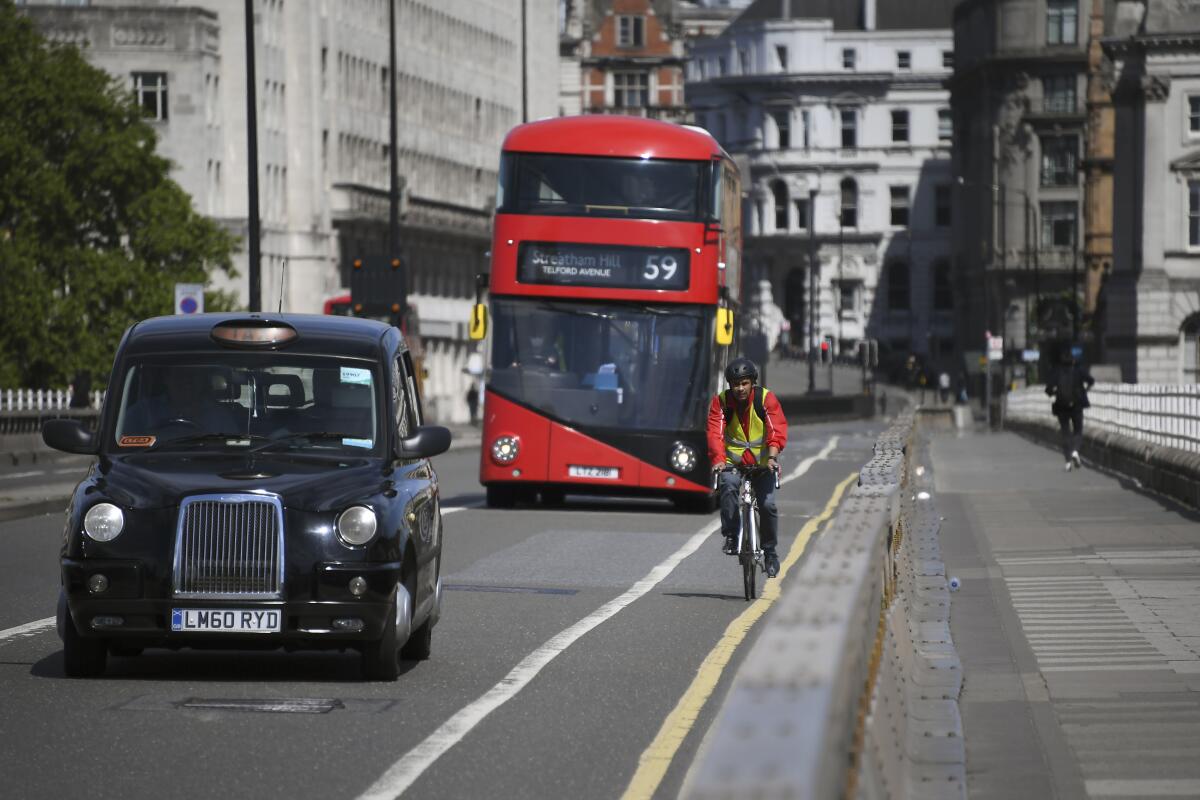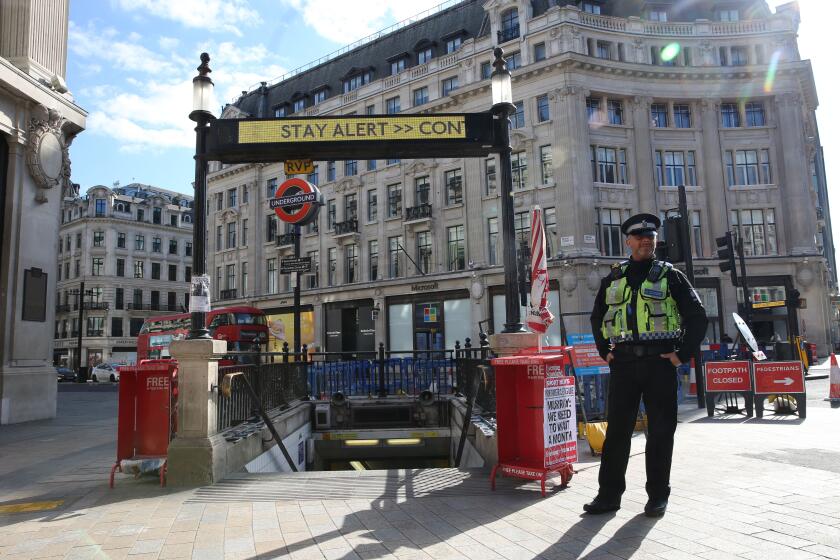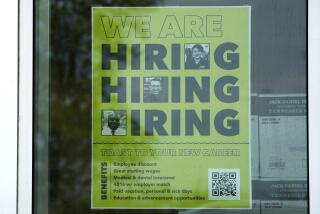Jobless claims in Britain surge by record amount because of coronavirus

- Share via
LONDON — Unemployment claims in Britain jumped by a record amount in April to their highest level since the 1990s, underscoring the impact the COVID-19 pandemic is having on the economy despite government programs to keep workers on payrolls.
Jobless claims surged by 856,000 in April to 2.1 million, the highest since 1996 and an increase of 69% from the month before, the Office of National Statistics said Tuesday. The figures covered only the first weeks of the coronavirus lockdown, said Jonathan Athow, a statistician at the ONS.
As bad as it was, economists suggested it could have been much worse. The government created a job-retention program to prevent millions of people from being laid off by effectively putting them on the government payroll.
“The fact unemployment hasn’t already shot up far higher given the huge fall in GDP and temporary closure of around a quarter of businesses is a good result for the government,” said Andrew Wishart, an economist at Capital Economics. That “reflects the 7.5 million people on its furlough scheme that may otherwise have been made redundant,″ he added.
The government wage-support scheme is due to ask employers to share costs from August, so job losses could accelerate if employers decide that their businesses can’t survive and give up.
Among the sectors hit hardest were hospitality and construction. Job vacancies also dropped sharply, with the number of empty posts falling by 170,000 to 637,000 in the three months to April compared with the previous quarter.
British prime minister’s call for ‘common sense’ in fighting coronavirus falls flat
The unemployment rate was at 3.9% in March, the last month for which full labor market statistics are available. Experts predict it will rise up to 10% by the fall.
Economist Kallum Pickering of Berenberg bank said that would mean an increase in the number of unemployed workers to around 3.3 million from about 1.35 million in March — far exceeding the previous peak of 2.7 million in October 2011 in the wake of the financial crisis.
An unemployment rate peak of 10% would still be well below the rate in the U.S., where the jobless rate hit 14.7% already in April and is forecast to rise further.
More to Read
Sign up for Essential California
The most important California stories and recommendations in your inbox every morning.
You may occasionally receive promotional content from the Los Angeles Times.











